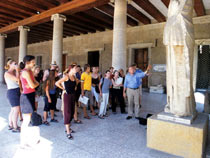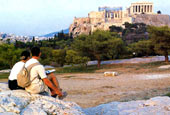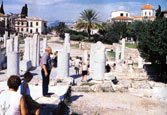
The Ancient Agora of Athens
The Agora was the heart of ancient Athens, the focus of political, commercial, administrative and social activity, it was the religious and cultural centre, and the seat of justice. It is here that words such as "democracy", "science" and "soul" were born.
The Temple of Hephestos
The temple, known as "Theseion" was dedicated to two gods, Hephestos and Athena, whose bronze cult statues stood in the interior. The construction of the Hephesteion started in 449 BC Stoa of Zeus Eleutheros. The stoa was erected at the end of the 5th century in honor of those who fought for the freedom and the security of the city. Socrates is said to have met his friends in the stoa.
Monument of Eponymous Heroes
Remains of an oblong pedestal enclosed by a fence. It supported the bronze statues of the legendary heroes who gave their names to the ten tribes of Attica.
The Odeion of Agrippa
It was build by Agrippa in 15 BC and comprised an auditorium of about 1000 people.
The Royal Stoa (Stoa Vassileus)
Built around 460 BC, it was the seat of the Royal Archon (Archon Vassileus). In this Stoa the laws of Solon were displayed, and the Cuncil of Aerus Pagus held its meetings. Open daily 8am-7.30pm


The Roman Agora of Athens
The Roman Agora of Athens was built in 19 and 11 BC with a donation of Julius Caesar and Augustus. Here you will see the gate of Athena Archegetis, the East Propylon, the Agoranomion and public latrines (Vespassianae) and the Horologion of Andronicos (Tower of the Winds), which was built by the astronomer Adronicos.
The site is open daily 8am-7.30 pm
